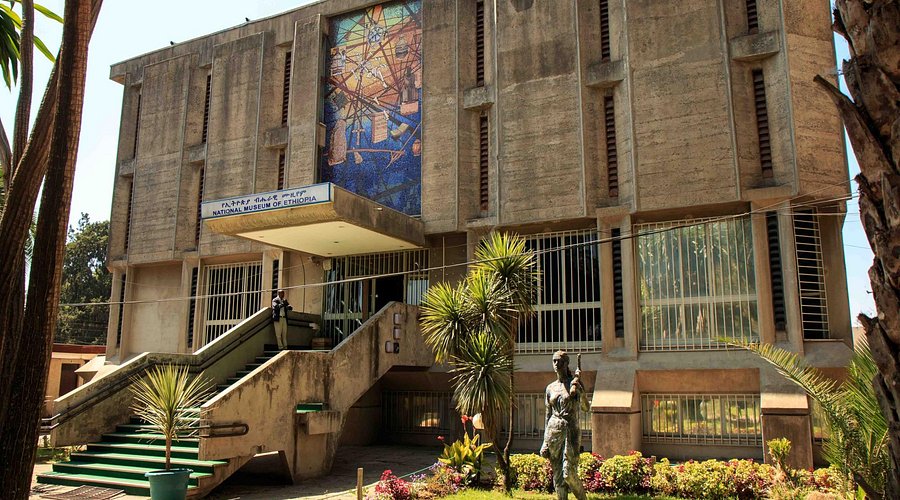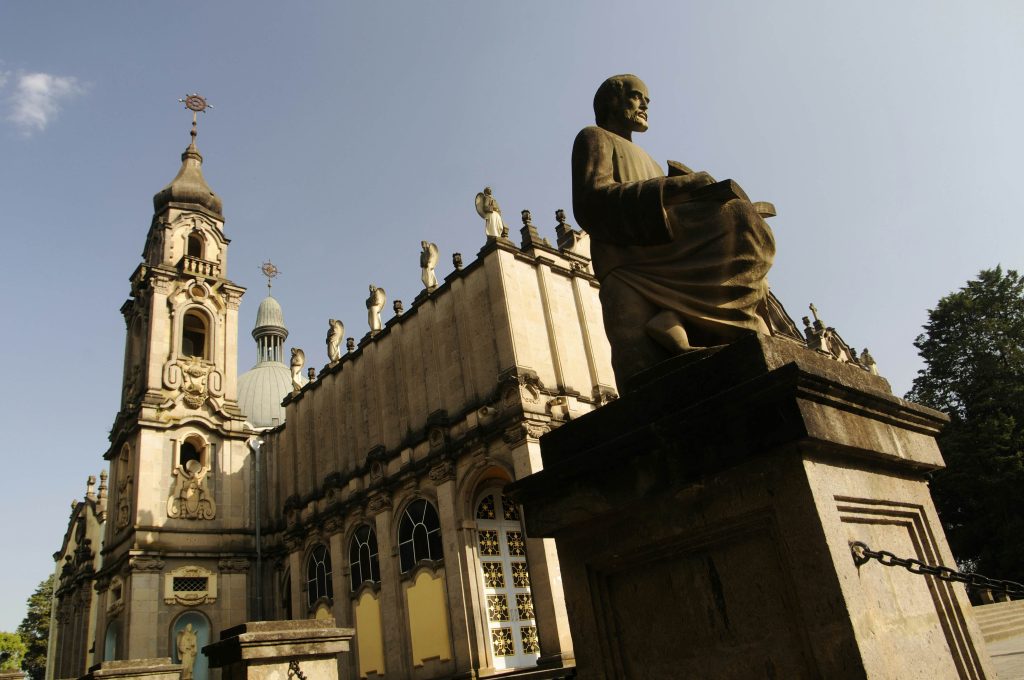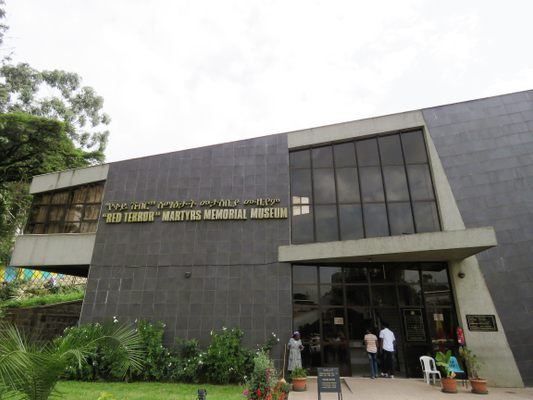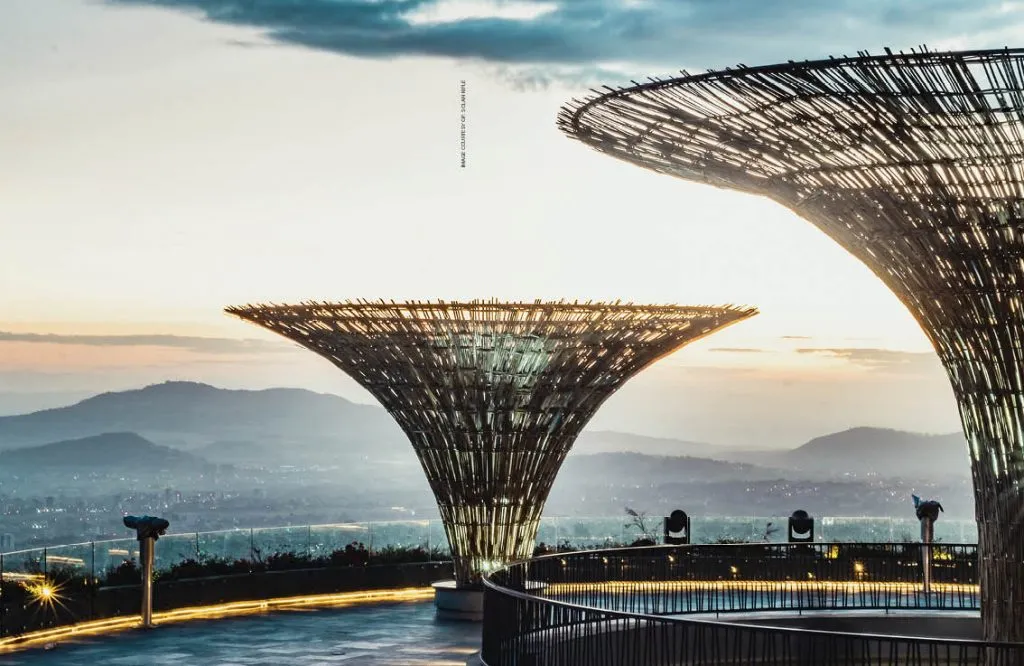
National Museum of Ethiopia
The National Museum of Ethiopia is one of the most important cultural institutions in Africa, housing treasures that span millennia of Ethiopian history. Its most famous resident is “Lucy” (Dinknesh), the 3.2-million-year-old hominid fossil that reshaped our understanding of human origins. Beyond Lucy, the museum showcases an extraordinary collection of archaeological finds, traditional art, royal regalia, and ancient tools that trace Ethiopia’s journey from prehistory through its imperial era. A visit here offers a deep dive into the diverse cultural, artistic, and anthropological legacy of the nation.
Holy Trinity Cathedral (Kidist Selassie)
One of the most significant churches in Ethiopia, Holy Trinity Cathedral is not just a religious site but also a symbol of Ethiopian pride and resistance. Built in the early 20th century, it is the final resting place of Emperor Haile Selassie and Empress Menen Asfaw, whose tombs are beautifully crafted from white marble. The cathedral’s stained-glass windows, woodwork, and paintings tell stories of Ethiopia’s religious traditions and struggles, including its fight against Italian occupation. The surrounding cemetery contains graves of notable patriots, artists, and scholars who played pivotal roles in Ethiopia’s modern history.


Red Terror Martyrs’ Memorial Museum
Entoto Hill is a scenic highland overlooking Addis Ababa.
It features panoramic views, cool air, and dense eucalyptus forests. The area is home to historic churches like Entoto Maryam and Menelik II’s palace.
Entoto Natural Park offers hiking, recreation, and cultural sites. It’s a peaceful escape with rich history and beautiful nature.
Entoto Hill: The Historic Highland Escape of Addis Ababa
One of the most significant churches in Ethiopia, Holy Trinity Cathedral is not just a religious site but also a symbol of Ethiopian pride and resistance. Built in the early 20th century, it is the final resting place of Emperor Haile Selassie and Empress Menen Asfaw, whose tombs are beautifully crafted from white marble. The cathedral’s stained-glass windows, woodwork, and paintings tell stories of Ethiopia’s religious traditions and struggles, including its fight against Italian occupation. The surrounding cemetery contains graves of notable patriots, artists, and scholars who played pivotal roles in Ethiopia’s modern history.

Merkato – Africa’s Largest Open-Air Market
While not a traditional historical site, Merkato is an essential experience that reveals the living history of Ethiopia’s trade, economy, and culture. Sprawling and chaotic in the best way, the market dates back to the Italian occupation and has evolved into one of the largest of its kind in Africa. It’s a place where you can witness traditional crafts being made, spices being sold in sacks, and the energy of Ethiopian city life at full throttle. For those interested in anthropology or urban culture, Merkato is a treasure trove.


